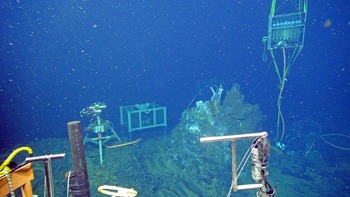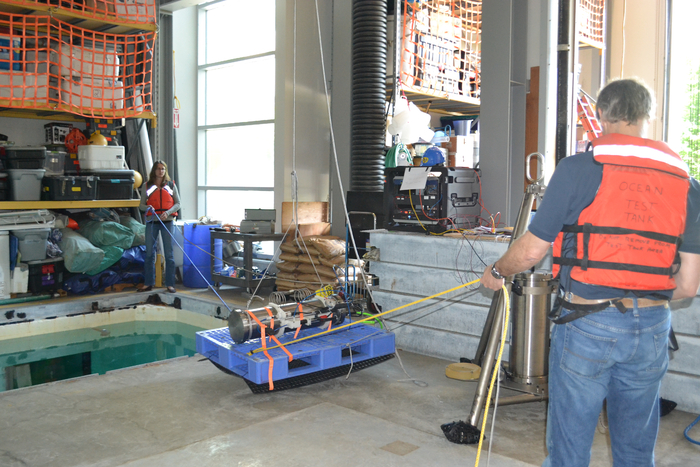
A digital still camera (left), mass spectrometer (middle) and hydrothermal fluid and microbial DNA sampler (right) document changes in animal life, gas and fluid chemistry, temperature, and chimney growth at the El Gordo vent site in the International District Hydrothermal Field at the summit of Axial Seamount - water depth is ~ 5000 ft (1500 m). Data are streaming live to shore 24/7. Credit: UW/OOI-NSF/WHOI, V16.
Measurements of dissolved gas concentrations such as carbon dioxide, methane, and hydrogen sulfide are critical to understanding volcanic, chemical, and biological processes in submarine environments. Carbon dioxide in magma chambers helps drive seafloor eruptions, and, along with methane and hydrogen sulfide, is key to supporting the subseafloor biosphere. Until recently, however, it has been impossible for scientists to measure these gases in situ for long-periods of time. Scientists depended on taking individual samples from vents and seeps, and then analyzing them back in land-based laboratories.
During 2014 a novel mass spectrometer, developed by Peter Girguis at Harvard University, was installed at a diffuse vent site (MJ03C) (in center of picture above) on Axial Seamount and at the summit of Southern Hydrate Ridge (MJ01B). In concert, these instruments are providing real-time long-term measurements of gases in both vent and seep environments, providing critical new information about gas evolution in these dynamic systems.


